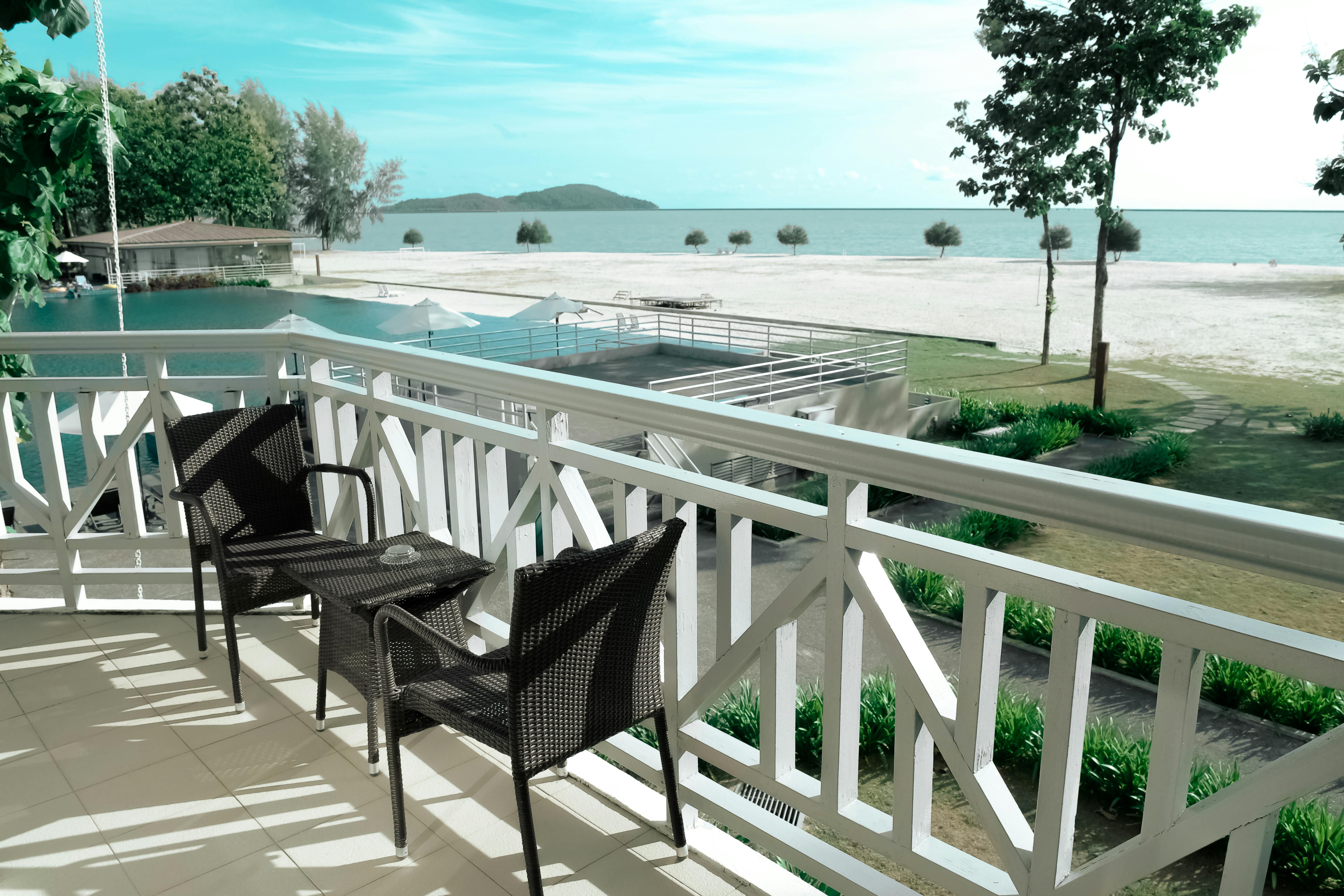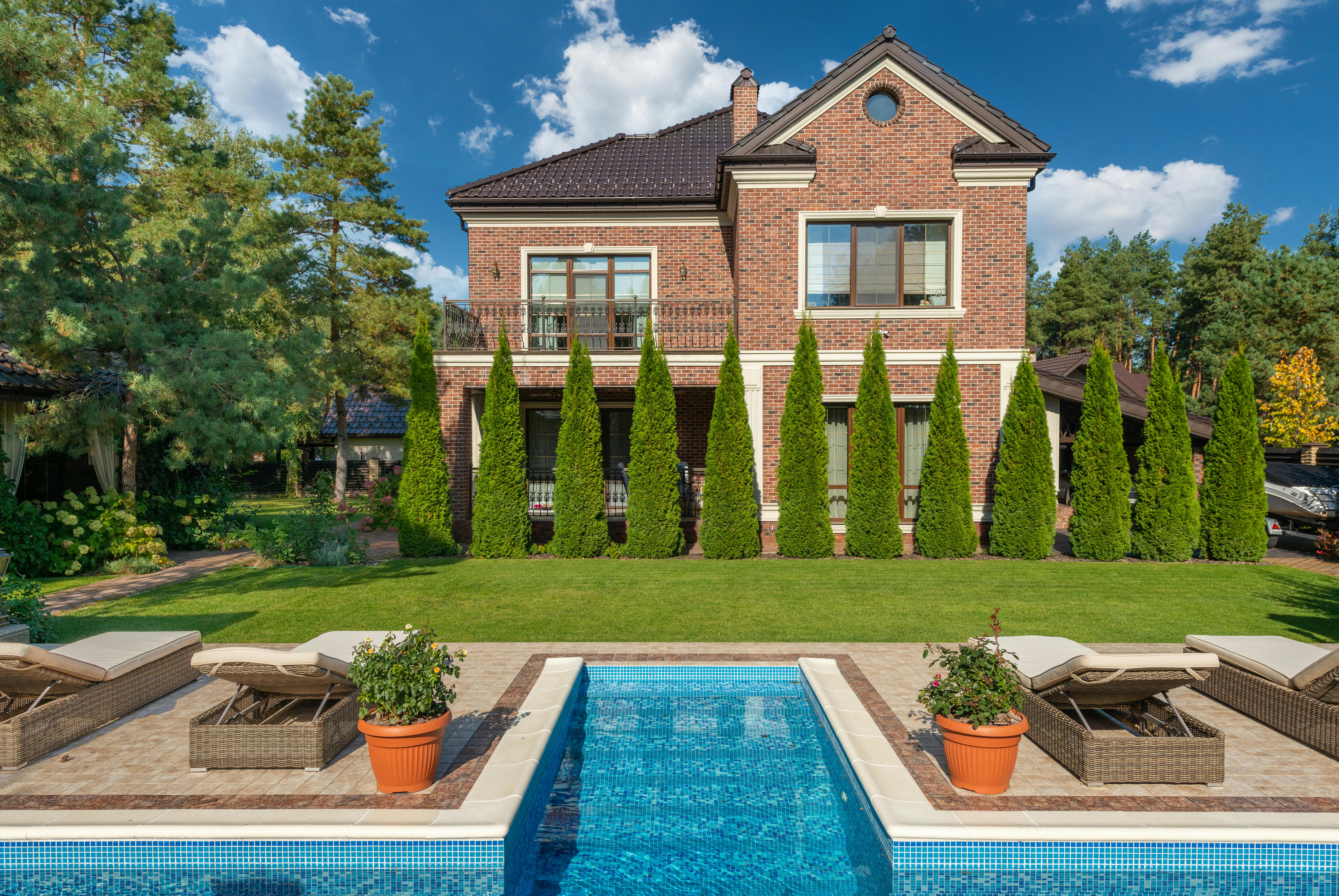If you have a balcony, you may have experienced an issue with water pooling on the surface. This can be a concern as it can cause damage to the balcony and create an unsafe environment. Fortunately, there are several steps you can take to prevent water pooling on your balcony. In this article, we will discuss how to stop water pooling on your balcony.To prevent water pooling on your balcony, make sure the balcony is sloped appropriately so that water runs off the edges. Additionally, ensure that the surface of the balcony is non-porous and even to avoid any areas where water can collect. You may also want to consider installing a drain on the balcony so any excess water can be easily directed away from the area.
Steps to Avoid Water Accumulation on Balcony
Balconies are an integral part of any home and it is important to keep them in good condition. Unfortunately, water accumulation on balconies can cause a lot of damage if left unchecked, so it is important to take steps to prevent water from collecting. Here are some tips for avoiding water accumulation on balconies:
1. Install Gutter Systems
Gutter systems are a great way to redirect water away from your balcony and reduce the risk of water pooling up. Gutters should be installed along the edge of your balcony, with downspouts that extend several feet away from the building. This will help ensure that the water is directed away from your property and not onto your balcony.
2. Seal and Caulk Joints
If you have any gaps or cracks in your balcony, it is important to seal them up with caulk or sealant. This will help keep out moisture and reduce the risk of water accumulating on your balcony. Be sure to inspect your balcony regularly for any new cracks or gaps that may need to be sealed.
3. Check for Leaks
Leaky pipes or rainwater runoff can cause major problems for balconies, so it is important to check for any signs of leaks regularly. If you do find a leak, be sure to have it fixed as soon as possible in order to prevent further damage!
4. Clean Regularly
As part of regular maintenance, it is important to keep your balcony clean by sweeping away dirt and debris that may collect over time. This will help reduce the risk of standing water gathering on your balcony as dirt can act as a barrier that blocks the flow of water off the surface.
5. Install Drainage Solutions
If you find that you have an issue with water pooling up on your balcony despite taking all these steps, then you may want to consider installing drainage solutions such as French drains or gutter extensions that will help direct the flow of water away from your property and onto another area where it can be properly managed.
Using Drainage Solutions
One of the most effective solutions for keeping water away from a balcony is to install a drainage system. This can help redirect water away from the balcony and prevent water pooling. Drainage systems can be either built into the balcony or purchased as an aftermarket feature. Built-in drainage systems are designed to be incorporated into the design of the balcony and are typically more expensive than aftermarket solutions. Aftermarket drainage systems are usually cheaper and easier to install, but may not fit as seamlessly with the overall design of the balcony.
Installing Guttering
Guttering is another option for keeping water away from a balcony. Guttering is a system of pipes and channels designed to divert rainwater away from specific areas, such as balconies. Guttering can be installed around the perimeter of the balcony, ensuring that any rainwater is directed away from it before it can cause any damage. Guttering also helps protect balconies from snowmelt runoff in winter months.
Creating Sloping Paths
Sloping paths are an effective way to make sure that water doesn’t pool around balconies. This involves constructing paths that slope gently away from the balcony in order to channel any rainwater or snowmelt runoff safely away from it. The goal is to ensure that any water is directed in such a way that it won’t accumulate near or underneath the balcony, which could cause damage over time.
Keeping Your Balcony Dry
Having a dry balcony is essential for keeping the area comfortable and safe. A wet balcony can lead to mold and other issues that can be difficult to repair. Fortunately, there are a few simple tips you can use to keep your balcony dry and prevent any water damage.
The first step in keeping your balcony dry is to make sure that it is properly sealed. If there are any cracks or gaps in the roof, you should seal them with caulk or other materials designed for outdoor use. This will help keep out moisture and prevent water from pooling on the surface of your balcony.
You should also check for any drainage problems in the area. If water isn’t draining away properly, it can pool on your balcony and lead to water damage. Make sure gutters and downspouts are in good condition and that the ground slopes away from the walls of your balcony. You may even want to install a drain system around the perimeter of your balcony if necessary.
It’s also important to make sure that plants, furniture, and other objects aren’t blocking drainage paths around your balcony. Keep plants trimmed back so that they don’t interfere with drainage systems or cause water to collect near walls or railings instead of draining away properly. Keep furniture away from drains as well so that it doesn’t block them or interfere with their ability to function correctly.
Finally, be sure to check for any leaks in the roof or walls of your balcony as these can lead to significant water damage if left unchecked. Make sure all joints are sealed correctly and inspect rafters for signs of rot or damage that could cause leaks over time. Taking these simple steps will help ensure that your balcony stays dry throughout the year!
Reducing Water Puddles On Balcony
Water puddles on balconies can be a nuisance, not only for the inconvenience of having to walk around them, but also because they can lead to mold and other structural problems. Fortunately, there are several methods for reducing water puddles on balconies.
One of the simplest solutions is to adjust the slant or pitch of the balcony floor. This can be done by adding or removing material from the existing surface, or by replacing the flooring with material that has a steeper angle. This will allow water to run off more quickly and help reduce standing water.
Another option is to install a drainage system under the balcony floor. This involves digging a trench and laying down pipes that will channel water away from the balcony and toward a proper drain. This method requires professional installation and may not be suitable for all balconies, but it can be very effective in preventing puddles.
A third solution is to seal any cracks in the balcony flooring or nearby walls that might be contributing to standing water. Sealing these cracks with appropriate sealants or caulks will help prevent leakage and keep puddles from forming in the first place.
Finally, it may also help to install gutters along the edge of the balcony that will direct water away from the area and into a drain or downspout. This is an especially helpful solution in areas with heavy rainfall or runoff from nearby buildings. Installing gutters along your balcony can also help protect your home from damage caused by rainwater as well as reduce standing water on your balcony itself.
By taking these steps, you can significantly reduce puddling on your balcony and keep it looking neat and clean for years to come.

Effective Ways To Stop Water Pooling On Balcony
Water pooling on a balcony can be an unsightly and potentially dangerous issue. Improper drainage can lead to damage to the balcony itself, as well as neighboring walls and floors. Fortunately, there are a few effective ways to stop water pooling on your balcony.
One of the simplest solutions is to install a drainpipe in the corner of the balcony that leads away from the building. This will help channel any water runoff away from your home and prevent it from pooling around your balcony. Make sure that you clean this drainpipe regularly to ensure it is free from debris and functioning properly.
Another option is to install a waterproof membrane on the surface of your balcony. This will help protect against water damage, while also preventing water from pooling in the first place. Make sure you choose a membrane that is specifically designed for balconies, as some regular waterproof membranes may not be suitable for this purpose.
Finally, you can also use some simple DIY solutions such as covering the surface with gravel or loose stones. This will help absorb any excess moisture and reduce its chance of pooling on your balcony. You can also add some potted plants or raised beds to help absorb any extra moisture and direct it away from your home.
By taking these steps, you can effectively stop water from pooling on your balcony and prevent potential damage to both your home and surrounding areas. With the right materials, tools, and knowledge, you should have no trouble keeping your balcony dry and free of standing water.
Keeping Your Balcony Dry During Rainfall
Rainfall can be a real nuisance when it comes to keeping an outdoor living space like a balcony dry. However, there are a few simple steps you can take to prevent rainwater from ruining your balcony. Here are some tips for keeping your balcony dry during rainfall:
Install Gutters
Installing gutters around the perimeter of the balcony is one of the best ways to keep your balcony dry during rainfall. Gutters will collect and divert rainwater away from the balcony, preventing it from pooling and seeping into the structure of the building.
Use Sealants
Using sealants around any cracks or openings in the walls or flooring surrounding your balcony is another effective way to keep rainwater out. Make sure that you use sealants that are specifically designed for outdoor use so they will be able to withstand exposure to rain and other elements.
Add an Overhang
Adding an overhang or awning above your balcony can help keep rainwater from reaching it in the first place. An overhang will also provide shade and protection from harsh weather conditions, making your outdoor space more enjoyable.
Cover Your Furniture
If you have furniture on your balcony, make sure that you cover it with tarps or waterproof covers when not in use. This will help keep your furniture dry even when rain falls on it directly, and protect it from potential damage caused by water exposure.
Trim Back Trees and Bushes
Trees and bushes near your balcony can cause more water to accumulate on its surface, so make sure that they are trimmed back regularly to reduce their impact on rainwater runoff. Also consider planting trees with smaller leaves or shallow roots so they won’t interfere with drainage or cause water seepage into walls or windows near the balcony.
By taking these simple steps, you can ensure that your balcony stays dry even during heavy rainfall!
Utilize Proper Drainage
One of the most effective ways to avoid standing water on a balcony is to ensure proper drainage is installed. This means making sure there are no obstructions in the drain pipe, as well as keeping the area around the drain clear of any debris. Additionally, it may be beneficial to install a gutter system around the edges of the balcony to help divert any water away from the area.
Install an Awning
Installing an awning or other type of overhead protection can be helpful in preventing standing water from accumulating on balconies. The awning should be made from waterproof material that will not allow water through, and should be angled properly so that it directs any rainfall away from the balcony. This will help prevent water from pooling on the surface, which can lead to standing water and potential damage.
Create Proper Slope
Creating a slight downward slope can also be beneficial when trying to avoid standing water on balconies. This can be done by adding a layer of gravel or other material beneath the flooring in order to create an incline away from where the railing is located. This will help direct any rainfall away from this area and reduce the likelihood of water pooling up against it and creating puddles.
Trim Plants and Shrubs
If there are any plants or shrubs located near or around a balcony, it is important to keep them trimmed in order to prevent excess moisture buildup and reduce standing water issues. Overgrown plants can trap moisture against walls or other surfaces, which can then lead to standing puddles of water on balconies. Regularly trimming these plants will help keep moisture away and reduce standing water issues.
Inspect Regularly
Finally, regular inspection is key when trying to prevent standing water issues on balconies. Inspections should be done regularly throughout all seasons in order to identify any potential issues that may arise, such as clogged drains or overgrown vegetation that could lead to pooling up against walls or railings. By regularly inspecting these areas, homeowners can identify potential problems quickly before they become bigger issues down the road.

Conclusion
Reducing water pooling on a balcony requires careful consideration of the surface, the drainage system, and any other underlying causes. The most effective solutions will depend on the specific circumstances of each balcony. To prevent water pooling, it may be necessary to construct a new drainage system or to make adjustments to an existing one. Homeowners can also consider installing barriers or sealing the balcony surface in order to reduce water accumulation. Additionally, any underlying issues such as inadequate gutters or roofing should be addressed. Taking these steps can help keep balconies safe and dry.
Ultimately, taking preventive steps is essential in order to avoid water pooling on a balcony. By investing in adequate drainage systems or waterproofing solutions, homeowners can help protect their balconies from damage and ensure that they remain safe and dry for years to come.

